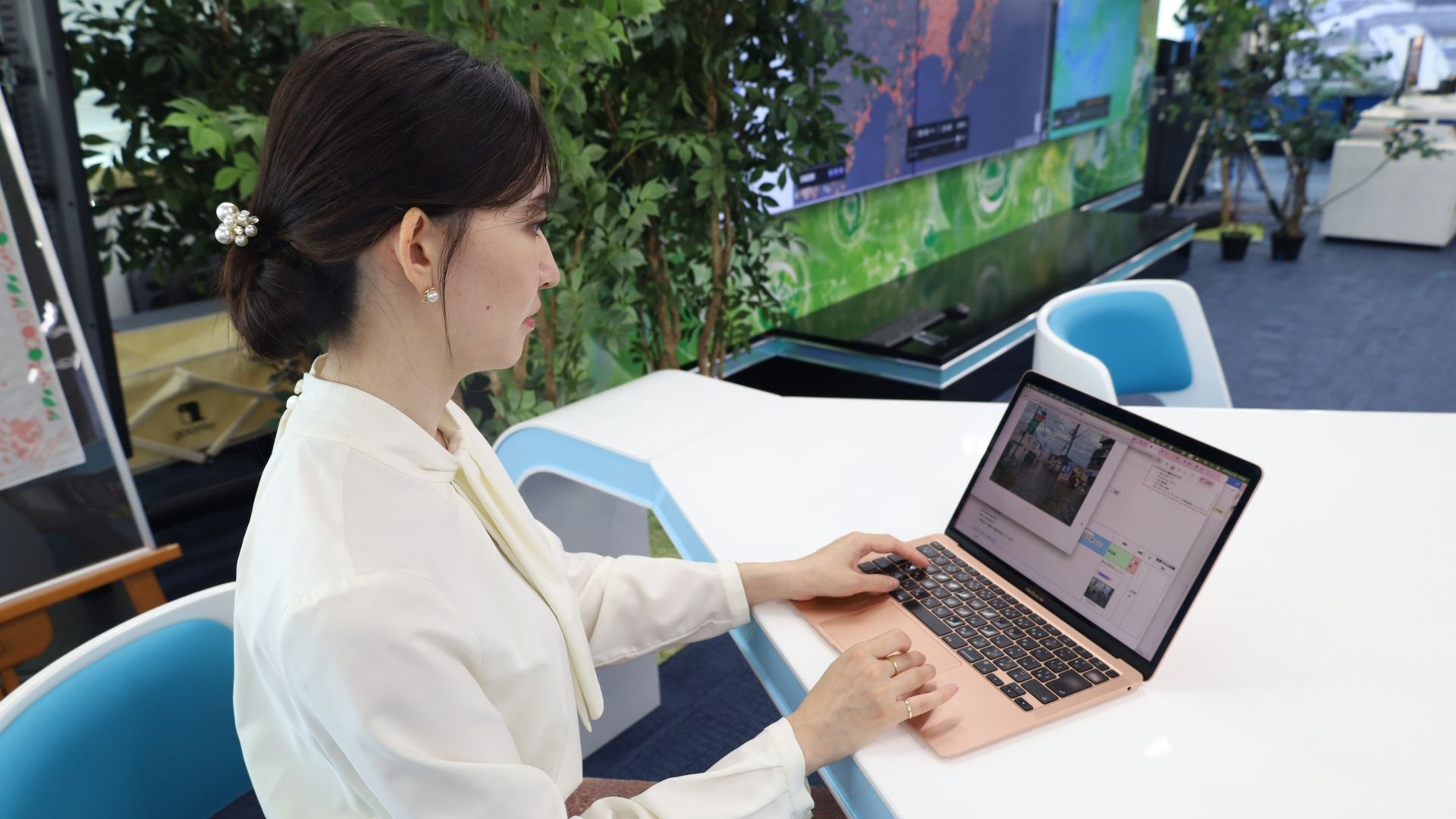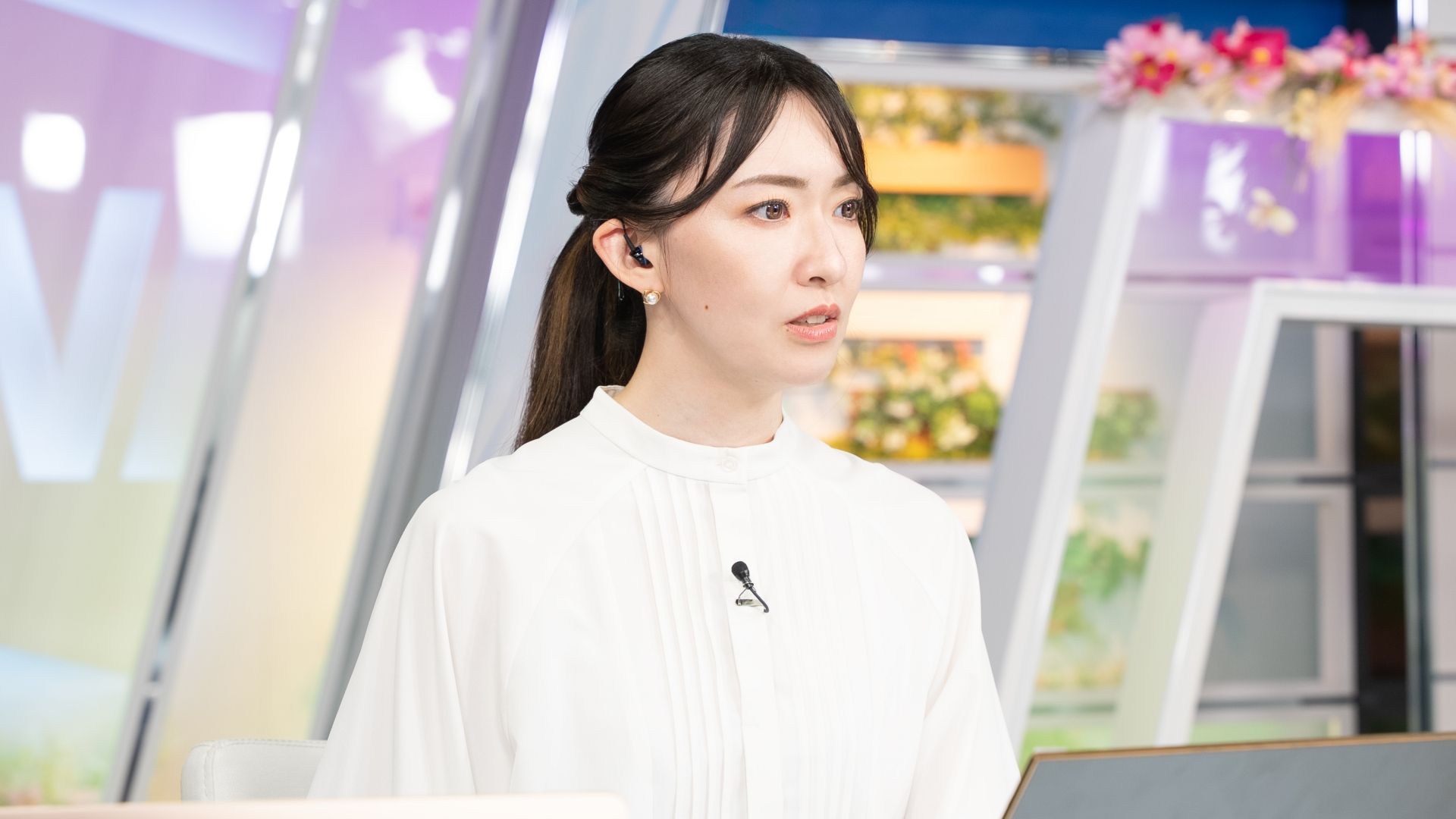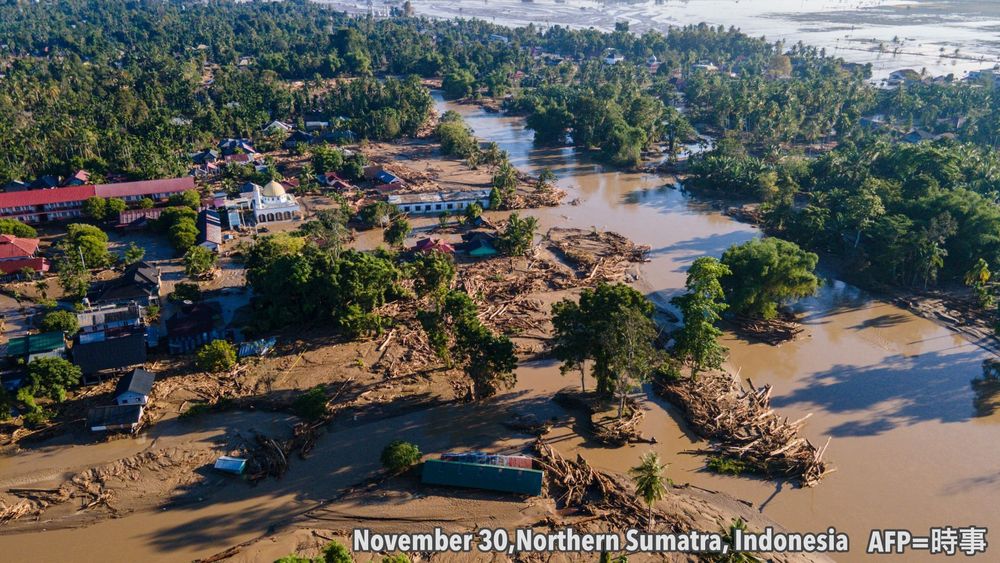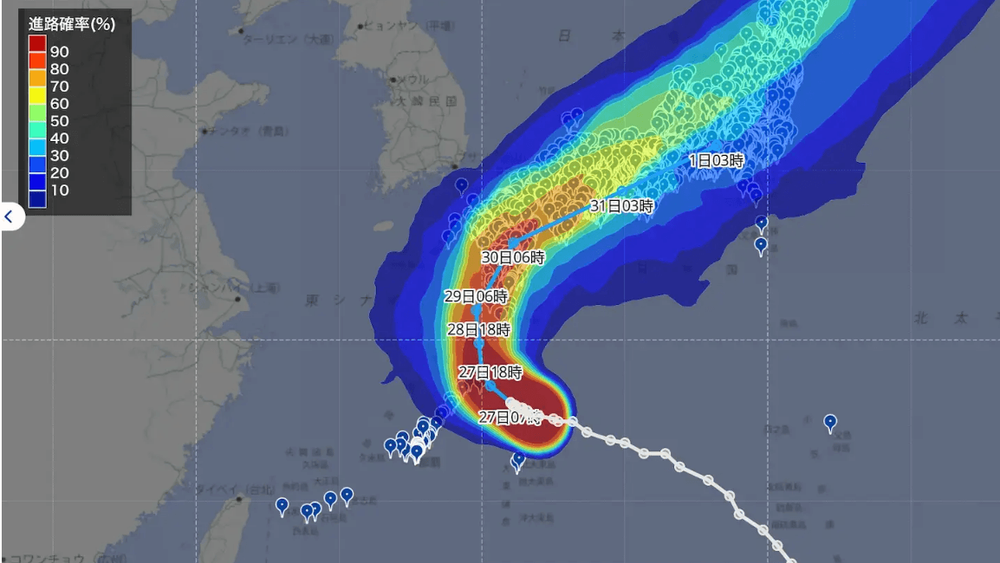October 10, 2025
Behind the Scenes of Typhoon Coverage: My Mission to Deliver Weather Information to You

Traditional terrestrial news programs have their own way of presenting weather segments, but at Weathernews LiVE, we've developed our own distinctive approach to delivering weather information. I'm Egawa from the PR team, and I also serve as a Weathernews LiVE caster. Today, I'd like to take you behind the scenes to show you exactly how we produce our programs when a typhoon is approaching or making landfall.
A Script-Free Weather Program: Creating Broadcasts That Protect Lives
On Weathernews LiVE, beyond delivering forecasts, we cover everything from seasonal highlights like fireworks displays and autumn foliage to practical lifestyle tips, including the best times to do your laundry. What makes us unique is our three-level risk system that determines how we approach each broadcast—you can even see it reflected in our ticker band colors.
Level 1 (Blue): No weather risk
Level 2 (Yellow): Weather risks that may disrupt daily life, such as transportation delays
Level 3 (Red): Weather risks that may threaten lives and property
During those peaceful Level 1 days, you might catch us sharing heartwarming pet stories or getting a little too excited about regional food specialties from across the country (yes, we casters are human too! 😆). But when a typhoon approaches and we shift to Level 2 or 3, everything changes. The lighthearted moments give way to what I call our "serious mode." Before every broadcast, our casters, meteorologists, and directors gather for detailed weather briefings to ensure we're all aligned on the program's approach and tone.
I'll never forget one particular Level 3 broadcast I was assigned to cover. A typhoon was intensifying, and you could feel the gravity of the situation throughout our entire studio. I found myself preparing earlier than usual—double-checking my appearance, running through vocal warm-ups in front of the mirror, making sure everything was perfect. When I met with our meteorologist before going live, their opening words hit me immediately: "There's a strong possibility this typhoon will make landfall during tonight's program."
I'd been tracking this storm for days, but hearing that it might strike while I was on air brought everything into sharp focus. In that moment, my entire mindset shifted: "The words I speak tonight could directly impact people's safety and the decisions they make." That realization filled me with both responsibility and determination.

During typhoon briefings, we drive deep into critical questions like: Is this going to be a “rain typhoon” or a “wind typhoon”?
What happens if the storm track shifts westward?
What if a linear rainband develops alongside it?
Together, we anticipate risks and even prepare for the worst-case scenario. What matters most to us is getting the “tone” and “nuance” of our communication just right. We need to find that delicate balance—choosing words that inform without causing unnecessary panic, while never downplaying real danger. Through detailed discussions with our meteorologists, I take full responsibility for every single word that comes out of my mouth on air.
And when the director suddenly bursts in saying, “Caster, we’re changing the program structure—we’re cutting in with an urgent typhoon update!” we pivot immediately.
You might be surprised to learn that Weathernews LiVE has no script. Why? Because “weather is alive.” It's constantly evolving, and we need the flexibility to adapt in real time. All we have is a program structure outline—the rest depends on real-time information and our ability to communicate it clearly. Thanks to vocal training, my articulation has improved, so people don’t call me “the Kami-sama (God of Tongue Slips)” as much anymore… or so I’d like to believe (though I’m not entirely sure!).
Our Users: 14 Years of Creating Weather Programs Together

I honestly can’t imagine Weathernews LiVE without Weather Reports or chat comments from our viewers. These user contributions give us something that no rain gauge or wind meter ever could—real, local insights about what's actually happening on the ground. Whether it's a sudden downpour, unexpected wind gusts, or flooded streets, our users are our eyes and ears across the country. One moment that really stands out was when we connected by phone with a supporter in Hawaii during a volcanic eruption. Hearing their firsthand accounts and concerns in real time gave our viewers a chance to think about disaster preparedness on a truly global scale—not just here in Japan.
The ability to connect with supporters around the world through our shared sky and natural environment... it really drove home this profound truth: "We are all connected under one sky." Since Weathernews LiVE broadcasts 24/7, 365 days a year, user reports flow in constantly—from the early morning hours well into the night. Every day, we receive 20,000 to 30,000 reports with photos and videos. There’s never a broadcast without featuring them.
User input is so fundamental to what we do that new caster training actually includes practice sessions where we read and discuss different types of reports. The program itself is built around this community engagement.
There used to be a segment called “Reports That Caught My Eye,” where casters would pick a handful of reports from that day and share them live. I often chose seasonal cloud photos. Just talking about it now makes me nostalgic—maybe it's time to bring that segment back! This past August marked an incredible milestone: the total number of Weather Reports surpassed 100 million. Together with supporters nationwide, we're truly co-creating Weathernews LiVE as both a weather information service and a disaster prevention resource.
To Be a Caster Who Delivers Information to Someone Listening with Anxiety

Can numbers and words on a screen truly reach the heart of someone watching on the other side? I honestly don't know the answer to that question. But what I do know is that at Weathernews, we have something special—we can see and feel our viewers' reactions in real time as we share information with them. To me, there's an important distinction between simply "conveying" information and truly "delivering" it. When I'm on air, I try to picture the individual faces behind each screen—real people who need to not just hear and understand what I'm saying, but who may need to act on it to stay safe. Even as I speak right now, there might be someone out there listening to my voice while feeling genuinely afraid about what's coming. For that person—and for everyone who turns to us during uncertain times—I want to be the kind of caster who puts their whole heart into delivering the information they need to protect their lives and the lives of those they care about.

December 11, 2025
Unprecedented: Cyclone Develops in Malacca Strait as Indonesia and Thailand Face Record Rainfall
December 9, 2025
[20 Years of Weather Reports] The Journey and Future of a One-of-a-Kind Global Community

December 7, 2025
Will AI Revolutionize Typhoon Forecasting? Weathernews' Typhoon Experts Deploy Advanced AI Prediction Model